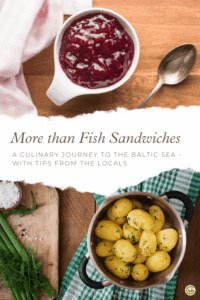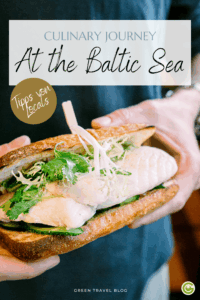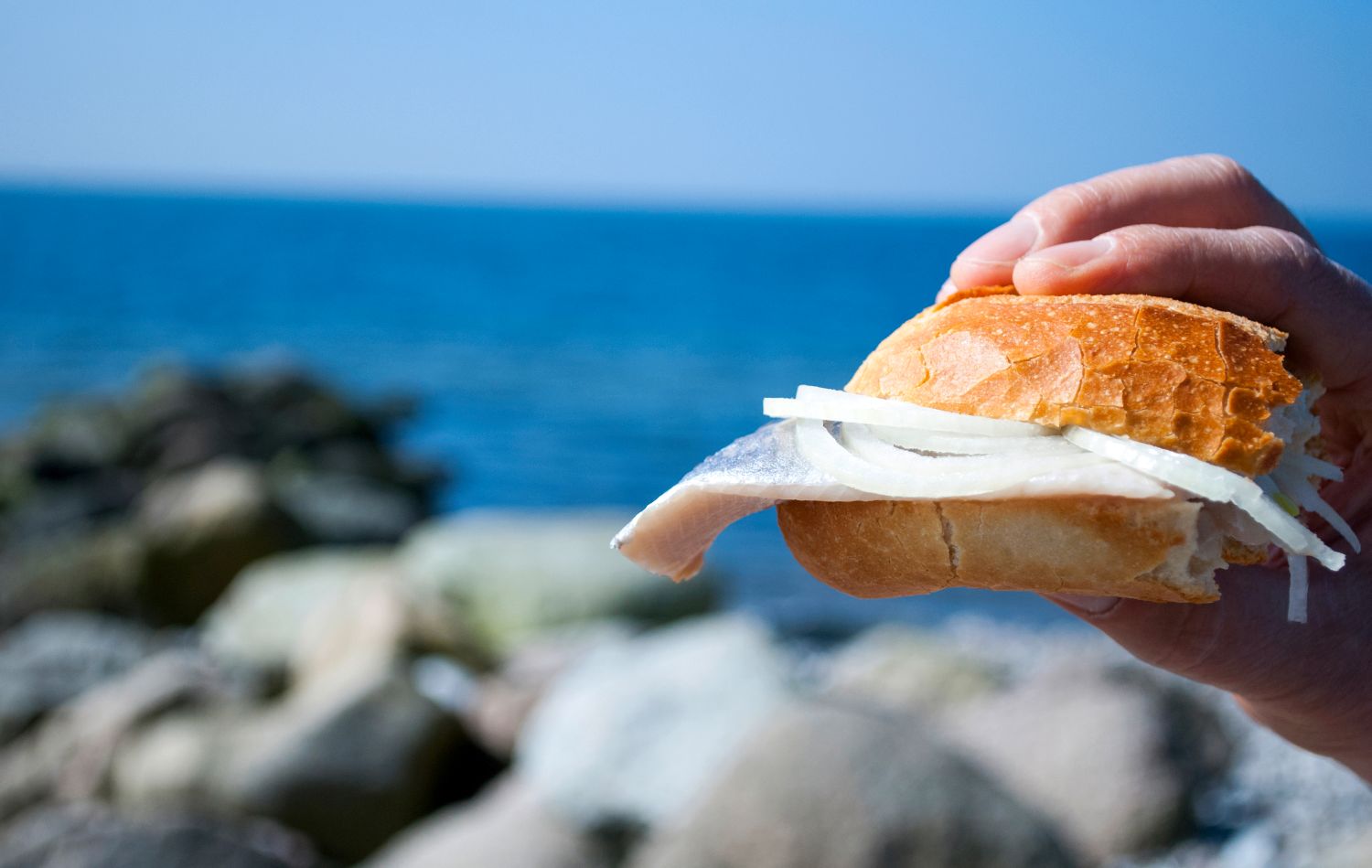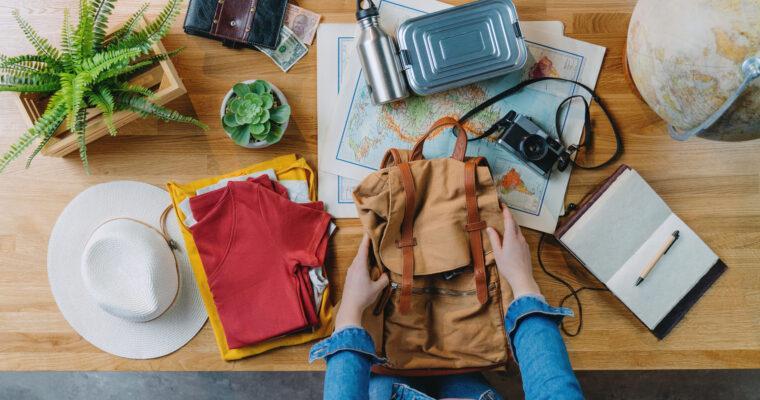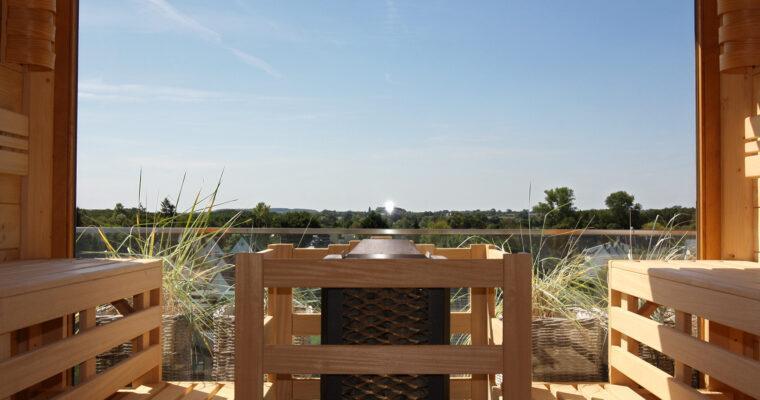You drive to the Baltic Sea, take off your shoes, feel the sand under your feet, the sea breeze on your face, and what’s the first thing you buy? A fish sandwich! “It is a must at Timmendorfer Strand,” says hotel manager Michell Meister of the SANDglow. But what if this popular ritual is no longer a given in the future? Fish stocks in the Baltic Sea have declined dramatically.
So what now? Don’t worry, you won’t miss any of the highlights of Baltic Sea cuisine. Here you’ll find insider recommendations from Timmendorfer Strand and you might even discover a new favorite beach dish.
Try these Baltic Sea classics
The Baltic Sea offers a relaxed pace of life. Clocks tick a little slower here. The cuisine is down-to-earth, regional and often surprising. Michell shares a few classics that are a must on any visit to Timmendorfer Strand.
#1 Sea Buckthorn Dessert – Vitamin Sea Sweetness

Bright orange, tart and fresh, and rich in nutrients: sea buckthorn is one of the most characteristic wild fruits of the Baltic Sea coast. The thorny shrubs grow directly in the dunes, where they withstand wind, salt and weather – they are particularly common in Schleswig-Holstein and Mecklenburg-Western Pomerania. Sea buckthorn is harvested between the end of August and October, when the berries are plump and sun-ripened.
These little fruits are real energy boosters: they contain ten times as much vitamin C as lemons, as well as vitamins A, E, B12, and valuable omega-7 fatty acids.
“The orange power berry is tart but healthy. Whether in a mousse, parfait, or cake, it’s a superfood with coastal flair and a sweet Baltic Sea kick.” – Michell Meister

Sea buckthorn is popular as a dessert, juice, fruit spread or liqueur – and makes the perfect culinary souvenir. Important: When picking sea buckthorn, avoid protected areas and choose local products that have been processed sustainably.
Tip: You can buy sea buckthorn fruit puree from the organic fruit producer “Ostseelibe” in many supermarkets.
#2 Holsteiner Sauerfleisch – Coastal Meat Classic
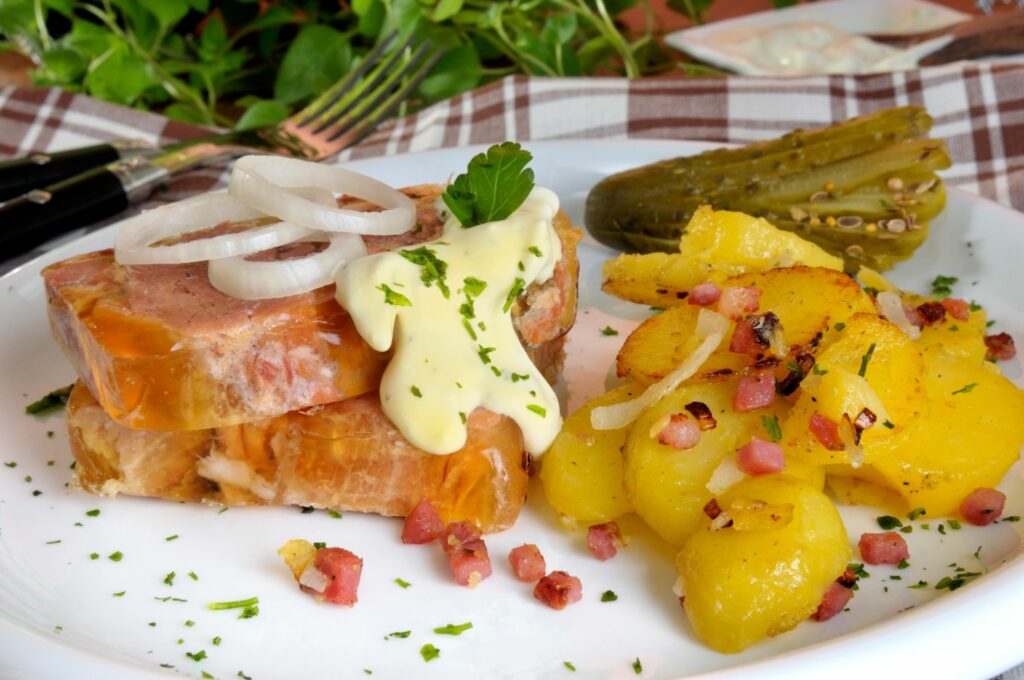
“A pork dish in jelly, seasoned with vinegar, bay leaves and onions, served with fried potatoes and tartar sauce. Hearty, rustic, typical of Schleswig-Holstein,” says the hotel manager. “Why do people eat it? Because even meat lovers on the coast need something hearty – and sour meat just has a vintage vibe.”
#3 Red Fruit Jelly – Sweet North Love
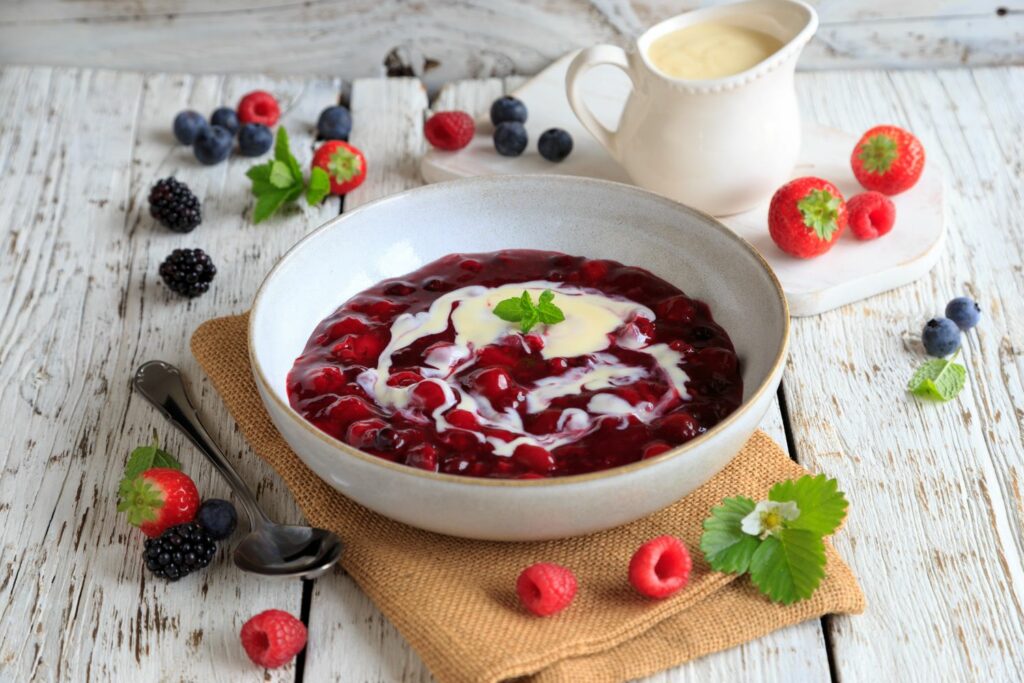
This dessert is a very popular part of the cuisine on both the North Sea and Baltic coasts. Michell recalls, “In the old days, we just picked whatever was available: currants, raspberries, cherries. They were boiled down with sugar and served with milk or vanilla sauce. It was a reward after a hard day’s work – now it’s soul food for those with a sweet tooth.
#4 Beets and Turnips
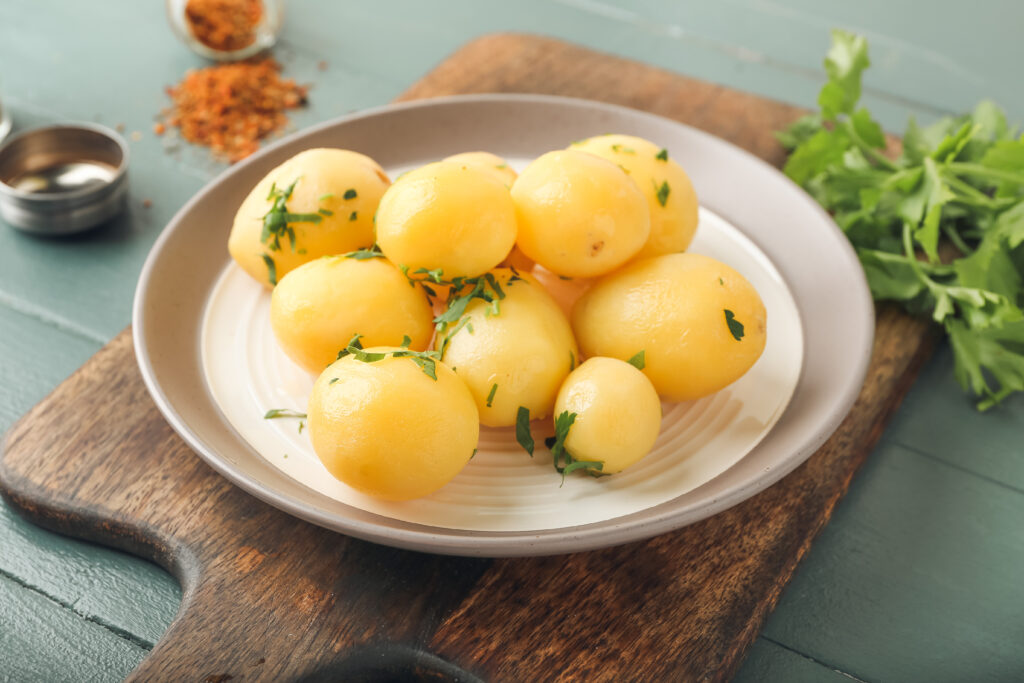
Finally, a word about Baltic Sea vegetables: Potatoes (boiled and served with salt, they are called “tüften” here), swedes, carrots, parsnips, horseradish, and various types of cabbage grow in the Baltic Sea region – often in organic quality! Once relegated to the role of side dish, they are now the center of attention for plant-based eaters.
Eating fish in the Baltic Sea
For many people, a vacation at the Baltic Sea without a fish sandwich or a visit to a seafood restaurant is unthinkable. But be careful where you eat, and remember one important issue: overfishing.
Overfishing of the oceans and the Baltic Sea

In its report on global fisheries, the Organization for Economic Cooperation and Development (OECD) found that 41 percent of the world’s fish stocks remain below “healthy” levels.
“Fisheries and aquaculture employ millions of people and feed billions more. But illegal fishing, overfishing and pollution threaten fish stocks and ecosystems.” – OECD
The Baltic Sea also suffers from overfishing, as does the North Sea, whose culinary delights we featured in this blog post. According to the WWF Fish Guide, current fishing laws are not sufficient to protect stocks in a sustainable way. Conversely, this means that we as consumers need to be careful about the fish we buy.
„”It is tragic that herring and mackerel continue to be heavily overfished in the Northeast Atlantic. The countries that fish there know the damage they are causing and are willing to accept the collapse of stocks for short-term profit. (…) As long as they continue on this destructive course, WWF advises against buying these fish.” – Mark Heuer, fisheries expert at WWF Germany
What fish from the Baltic Sea should you avoid eating? (according to WWF)
- Herring (from the North Sea is acceptable, but not from the Baltic Sea)
- Matjes (young, immature herring)
- Mackerel
- Eel (European eel is highly endangered.)
- Cod (only cod from Iceland is acceptable)
Which Baltic Sea fish is still safe to eat?

In addition to Baltic salmon, you can also eat sprats. Sprats are small, herringlike fish that live in schools and are a staple of Baltic Sea cuisine. “Sprat stocks in the Northeast Atlantic are in good condition and fishing is at sustainable levels,” says WWF. “In the Baltic Sea, however, fishing pressure remains too high. This is evidenced by the fact that catch quotas have been consistently exceeded in recent years.”
Which Baltic Sea fish sandwich is the most sustainable?
According to Michell, fish sandwiches are available in the Baltic Sea with Bismarck herring, fried herring, matjes or salmon. The best ecological choice is Baltic salmon, caught off the coast of Rügen. The sustainability of this fish is controversial, but it is not as strictly discouraged as herring and matjes. In the WWF Fish Guide, Baltic salmon is rated yellow in the traffic light system. In general, the WWF recommends wild Alaskan salmon (green).
Be careful with smoked fish platters
Smoking fish has a long tradition on the Baltic Sea. “The quaint fish stands right by the harbor or beach make it authentic,” says Michell. They offer smoked eel, mackerel, salmon and sprat, usually served with black bread, horseradish and onions. However, two of these four species are not acceptable. When it comes to eels, it’s important to remember that they are a highly endangered species, with a 95% population decline in Europe! Eels are on a par with polar bears, gorillas and moose in terms of endangerment. They do not reproduce in captivity or aquaculture. Every eel that ends up on your plate has been caught in the wild and is therefore missing from nature. So the only sustainable option is not to eat it.
Research in Timmendorfer Strand

Yvonne Bork, manager of the Lifestylehotel SAND, did some research for us in Timmendorfer Strand. “At the moment it is almost impossible to find eel,” she reports. And when it is available, it is almost unaffordable. “The price per kilo is between 15 and 23 euros.” Matjes herring is “still affordable” and particularly popular in fish sandwiches.
Falafel and sushi as sustainable alternatives?
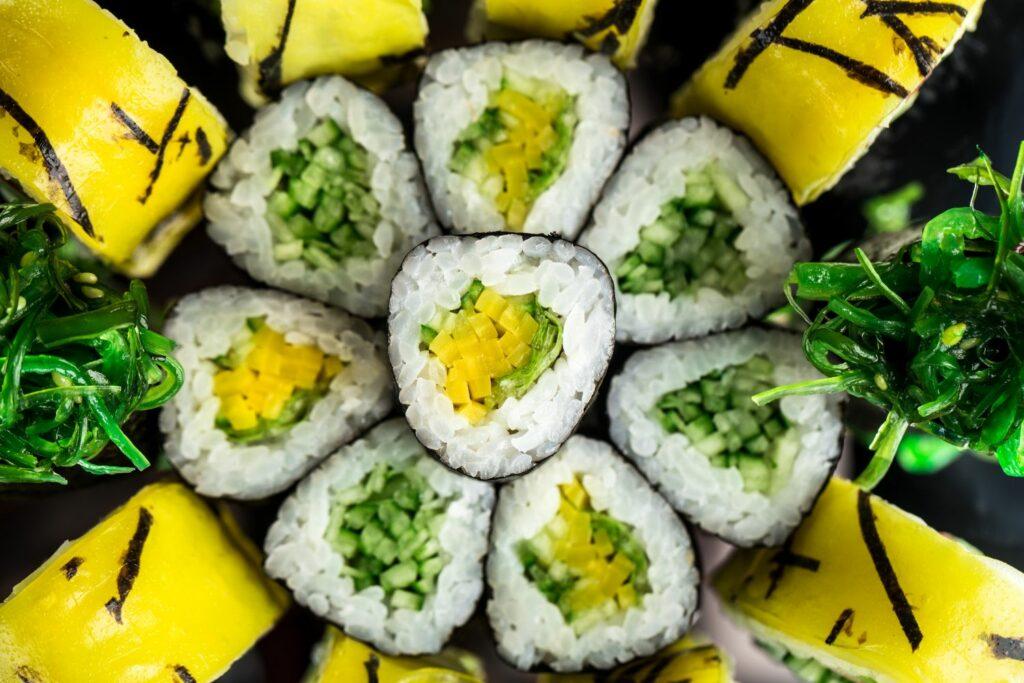
The adults-only Lifestylehotel SAND is located in the second row of the popular Baltic resort and is a breakfast-only hotel. Here the focus lies on sustainable organic ingredients. They are also happy to advise you on where to eat sustainably. The restaurant Bartmans Kitchen, within walking distance, offers fish and meat as well as daily vegan alternatives. The Hafeneck Kiosk serves fish sandwiches, fries with vegan mayonnaise, and falafel. Hostess Marion Muller sums it up: “Scarcity changes consumer behavior. The general trend towards sushi and the like is currently also reflected in the restaurants on the Baltic Sea coast.”
“Are we witnessing a generational and cultural shift?” – Marion Muller
But is imported sushi fish more sustainable than local Baltic Sea fish?
It is more sustainable to eat imported fish that is MSC certified and comes from a healthy stock than to eat local fish that is on the red list of endangered species. So there you have it. And yes, at first glance it seems wrong, because we as sustainable travelers are so focused on regionality. And yet, in the case of Baltic Sea fishing, the more sustainable option is not to support it unreservedly.
In 2025, the WWF published a sushi guide that ranks the most popular sushi fish. For many fish, such as tuna and salmon, the way they are caught is important. For this reason, it is easiest to look for the MSC label as well as the species of fish.
Even easier and more sustainable: choose vegetarian sushi with cucumber, pumpkin or beetroot. It’s just as delicious and won’t harm fish stocks in the Baltic Sea or anywhere else in the world.

With or without fish…
… the Baltic Sea remains a place to savor – not in spite of, but because of the growing awareness of sustainable fish consumption. If you take a closer look at your fish sandwich, you will discover new alternatives, rediscovered regional classics, and exciting taste experiences off the beaten track. So why not give it a try? And maybe your next visit to the Baltic Sea won’t have to include the daily matjes sandwich on the beach.
Tip: Check out this blog post about a weekend by the Baltic Sea for more great ideas for coastal excursions!
Save this article as an inspiration on Pinterest.
